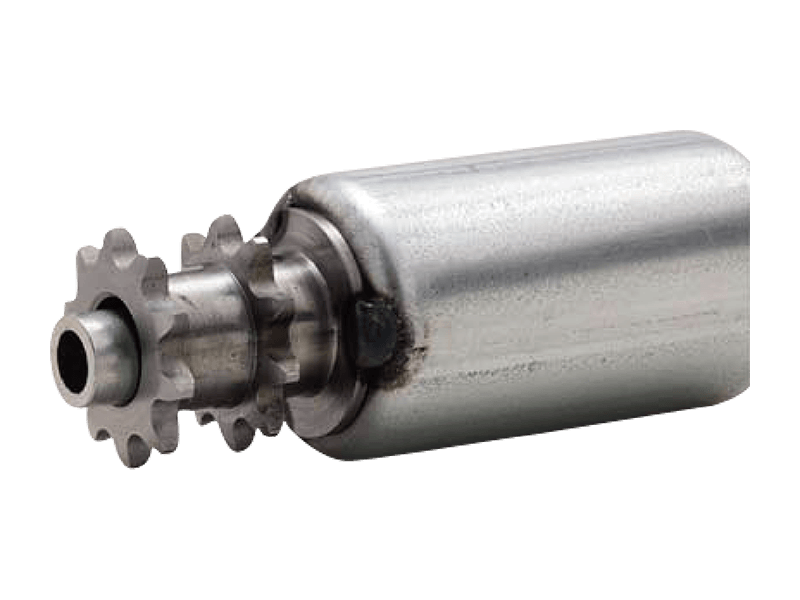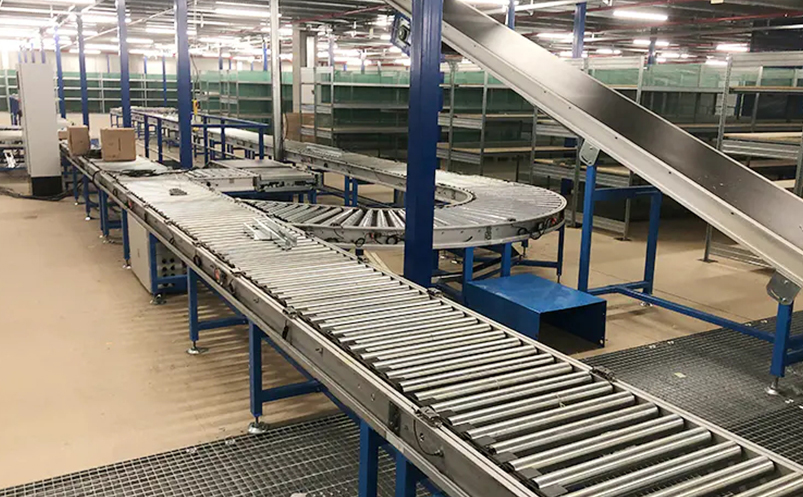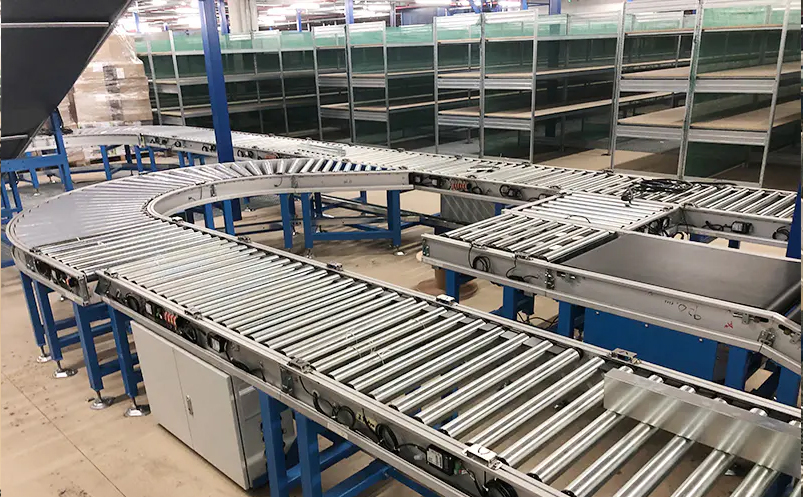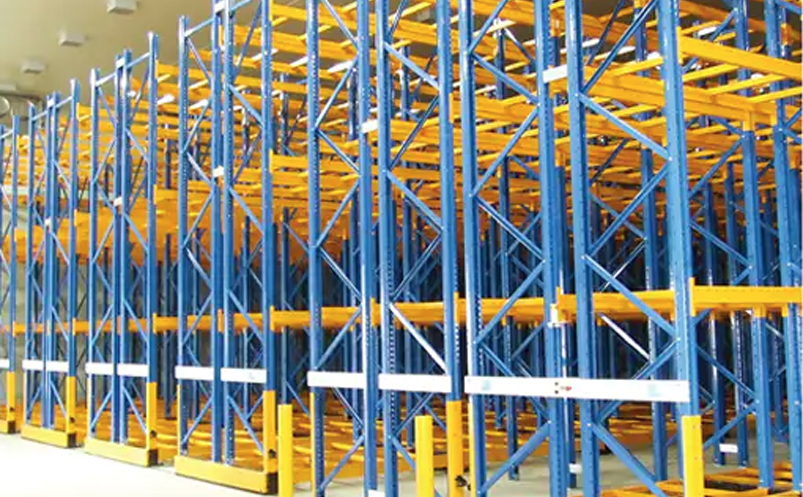Understanding Sprocket Drive Rollers
Definition and Basic Structure
A sprocket drive roller is a crucial component in mechanical transmission systems. It typically consists of a cylindrical roller body, with one or more sprockets attached to its ends or along its length. The roller body is usually made of materials such as steel, which provides high strength and durability. The sprockets, on the other hand, are toothed wheels that mesh with a chain, enabling the transfer of rotational motion and power.
For example, in a conveyor system, the sprocket drive roller serves as a key element to move objects along the conveyor line. The sprocket engages with a chain that is connected to a power source, like a motor. As the motor rotates the chain, the sprocket and the attached roller also turn, facilitating the movement of items placed on the conveyor.
Working Principle
The working principle of a sprocket drive roller is based on the meshing of the sprocket with a chain. When a power source, such as an electric motor, drives the chain to move, the teeth of the sprocket interlock with the links of the chain. This engagement ensures a positive drive, meaning there is minimal slippage between the sprocket and the chain. As the chain moves, it imparts a rotational force to the sprocket, which in turn rotates the roller.
This mechanism is highly efficient in transferring power over long distances and can handle relatively high loads. It is widely used in applications where precise control of movement and high torque transmission are required.
Types of Sprocket Drive Rollers
Single - Sprocket Drive Rollers
Single - sprocket drive rollers have a single sprocket attached to one end of the roller. This type is commonly used in conveyor systems where the power is transmitted from a single source to multiple rollers in a sequential manner. For instance, in a simple factory conveyor line, a motor - driven chain engages with the single sprocket of the first roller. As the first roller rotates, it can either directly move items on the conveyor or transfer power to adjacent rollers through additional mechanical linkages.
The advantage of single - sprocket drive rollers is their simplicity. They are easy to install, maintain, and are cost - effective for applications with relatively low - power requirements and straightforward conveyor layouts.
Double - Sprocket Drive Rollers
Double - sprocket drive rollers, as the name implies, have sprockets at both ends of the roller. This design is beneficial in applications where power needs to be transmitted in multiple directions or when there is a need to synchronize the movement of different parts of a conveyor system.
In a large - scale industrial conveyor network, double - sprocket drive rollers can be used to distribute power to different branches of the conveyor. One sprocket can receive power from the main drive chain, while the other sprocket can drive a secondary chain that powers a parallel conveyor section. This type of roller ensures better balance and more efficient power distribution, especially in complex conveyor setups.

Applications of Sprocket Drive Rollers
Conveyor Systems in Manufacturing Industries
In manufacturing plants, sprocket drive rollers play a vital role in conveyor systems. They are used to transport raw materials, semi - finished products, and finished goods between different workstations. For example, in an automotive manufacturing plant, sprocket - driven conveyor rollers move car parts such as engine components, body panels, and wheels along the assembly line.
The high - load - carrying capacity and precise movement control provided by sprocket drive rollers ensure that the manufacturing process runs smoothly and efficiently. They can handle heavy and bulky items, and the positive drive mechanism ensures that the parts are transported at a consistent speed, which is crucial for maintaining the production rhythm.
Packaging and Logistics
In the packaging and logistics industry, sprocket drive rollers are extensively used in conveyor systems within warehouses and distribution centers. They are responsible for moving packages of various sizes and weights from the receiving area to storage locations, and then to the shipping area.
For instance, in an e - commerce fulfillment center, sprocket - driven conveyor rollers are used to transport packages from the sorting stations to the appropriate loading docks. The ability of these rollers to handle different load types and their reliable operation in high - volume environments make them an ideal choice for the fast - paced packaging and logistics industry.
Agricultural Machinery
In agricultural machinery, sprocket drive rollers are used in equipment such as combine harvesters and conveyor systems for grain handling. In a combine harvester, sprocket - driven rollers are part of the mechanism that moves the harvested crops, such as wheat or corn, from the cutting area to the threshing and cleaning sections.
These rollers need to be robust and resistant to the harsh environmental conditions and abrasive nature of agricultural materials. The sprocket drive system ensures that the crops are moved efficiently, even in dusty and dirty agricultural settings.
Maintenance and Troubleshooting of Sprocket Drive Rollers
Regular Lubrication
Lubrication is essential for the smooth operation of sprocket drive rollers. The sprockets and the chain, which are in constant contact and relative motion, require proper lubrication to reduce friction and wear. Regularly applying a suitable lubricant, such as high - quality chain oil, to the sprockets and chain helps to extend their lifespan.
Lubrication also helps to prevent rust and corrosion, especially in environments where moisture or corrosive substances are present. It is recommended to follow the manufacturer's guidelines regarding the type of lubricant to use and the frequency of lubrication.
Inspection for Wear and Tear
Periodic inspection of sprocket drive rollers is crucial to detect any signs of wear and tear. Check the sprocket teeth for signs of excessive wear, such as rounding or chipping. Worn - out sprocket teeth can cause the chain to slip, leading to inefficient power transmission and potential damage to other components in the system.
Inspect the roller body for any dents, cracks, or signs of deformation. Also, check the bearings that support the roller for smooth rotation. If the bearings are worn or damaged, the roller may not rotate freely, increasing the load on the drive system.
Chain Tension Adjustment
Proper chain tension is essential for the optimal performance of sprocket drive rollers. If the chain is too loose, it can cause the sprocket to skip teeth or vibrate, leading to uneven wear and reduced efficiency. On the other hand, if the chain is too tight, it can put excessive stress on the sprockets, rollers, and bearings, shortening their lifespan.
Most sprocket - driven systems are equipped with a mechanism to adjust the chain tension. Regularly check the chain tension and make adjustments as necessary to ensure smooth operation.







